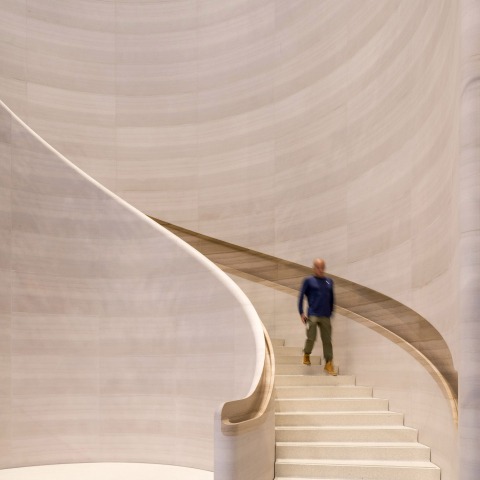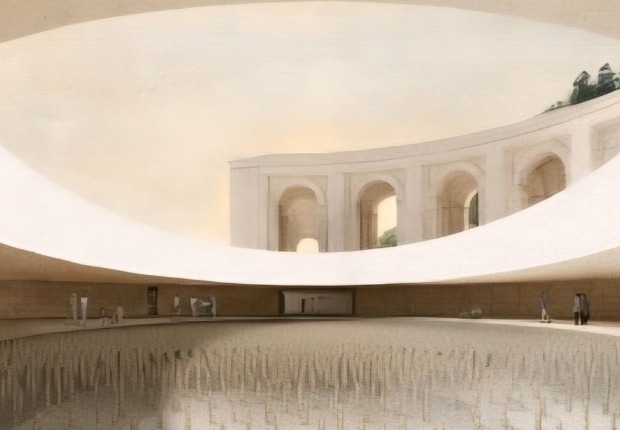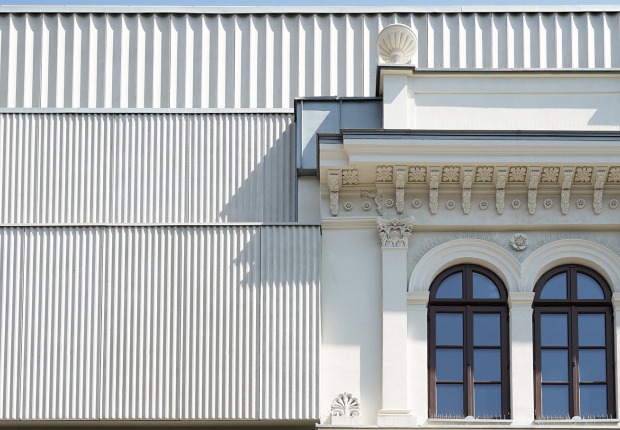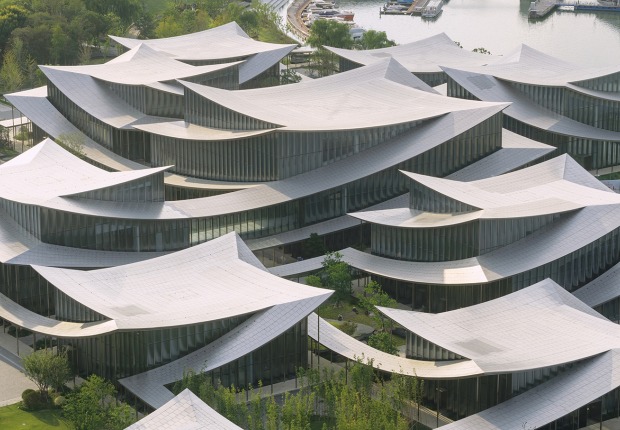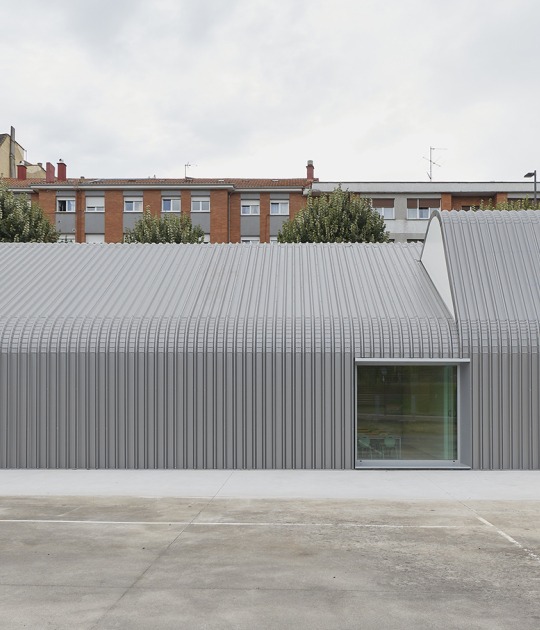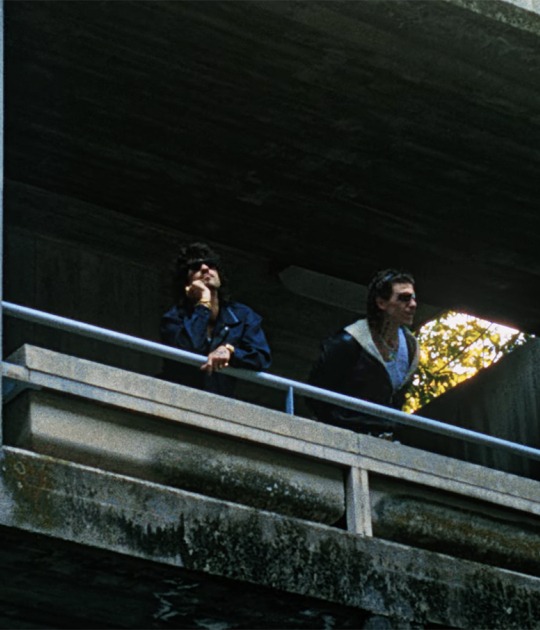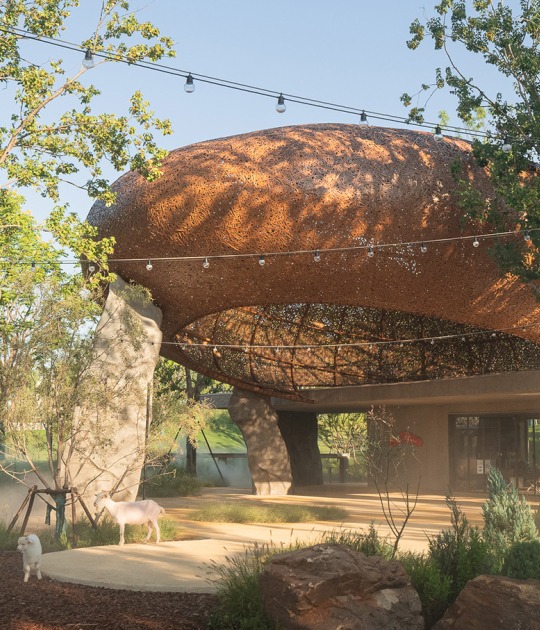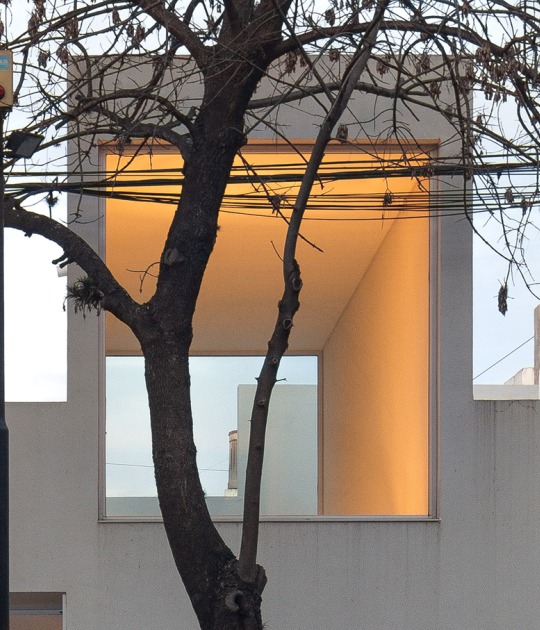A unique 7.6-metre canopy protects Apple Orchard Road from tropical sunlight and provides shelter from the rain in the greenest city in Asia.
As in other cities like Dubai or San Francisco, this new Apple Store designde by Foster + Partners run on renewable energy and includes eight potted big-trees at the entrance and a further 12 Ficus Ali trees inside.
Other main characteristics are its two staircases that is assembled from solid stone blocks measuring up to 5.2 feet x 3.9 feet x 0.6 feet (1.6m x 1.2m x 0.2m) weighing up to 2,200lbs (1,000kg) each.
Description of project by Foster + Partners
Apple Orchard Road is the first Apple Flagship in Singapore, highlighting its role as a global centre for creativity. Its design reflects the vibrancy and innovative spirit of the city-state. The project is another example of the close collaboration between Foster + Partners and the design team at Apple led by chief design officer, Sir Jonathan Ive and Angela Ahrendts, senior vice president of Retail and Online Stores. Located along the tree-lined avenue, Orchard Road – at the heart of the garden city – the flagship aims to create a new social focus, while working with nature. It blurs the boundaries between inside and outside.
Singapore is considered one of the greenest cities in the world, and the new flagship embodies this theme, inspired by the origins of Orchard Road, when nutmeg and fruit orchards dominated the site. It embraces the wide pavement in front of the store, forming a new public space with eight mature trees that create a shaded ‘green orchard’, and provide a natural meeting place amid the dense urban environment. Its 120-foot (36.5m) wide glazed storefront dematerialises the building’s facade. A thin, white canopy cantilevering out 25 feet (7.6m), drawing the eye towards the interior, while providing shelter from Singapore’s tropical climate.
Stefan Behling, Head of Studio, Foster + Partners, commented: “This is one of our greenest Apple spaces yet – not only does all the energy come from renewable sources, but it is filled with lush trees. It also breaks down the boundaries between the inside and outside, with the greenery cascading through the store from the mezzanine to the ground floor and out to onto Orchard Road, creating the most welcoming civic gesture.”
The large stone walls to either side of the interior feature two spectacular curved staircases, hand-carved by Italian artisans from Castagna stone providing warm and beautifully sculpted bookends to the grand space inside – a homage to craftsmanship and materiality. The staircases effortlessly flow up to the mezzanine floor with integrated handrails which have a tactile and smooth finish.
The mezzanine contains the largest Genius Grove in the world with twelve Ficus Ali trees, which not only appeal to the visual aesthetic, but stimulate all human senses – enriching the temperature, the smell, and the aural qualities of the space. It creates an oasis of tranquillity in the busiest part of the store. The Forum with Apple’s widest video screen in the world, is a gathering place where the Creative Pros and experts from photography, music, app development and art will educate, inspire and entertain consumers, educators, and local entrepreneurs. Apple Orchard Road enables Singapore to become a new creative hub, a beacon for the community, and a global centre for ‘Today at Apple’ the newly launched experience to connect people to their passions, take them deeper and connect them closer to one another and their community.
